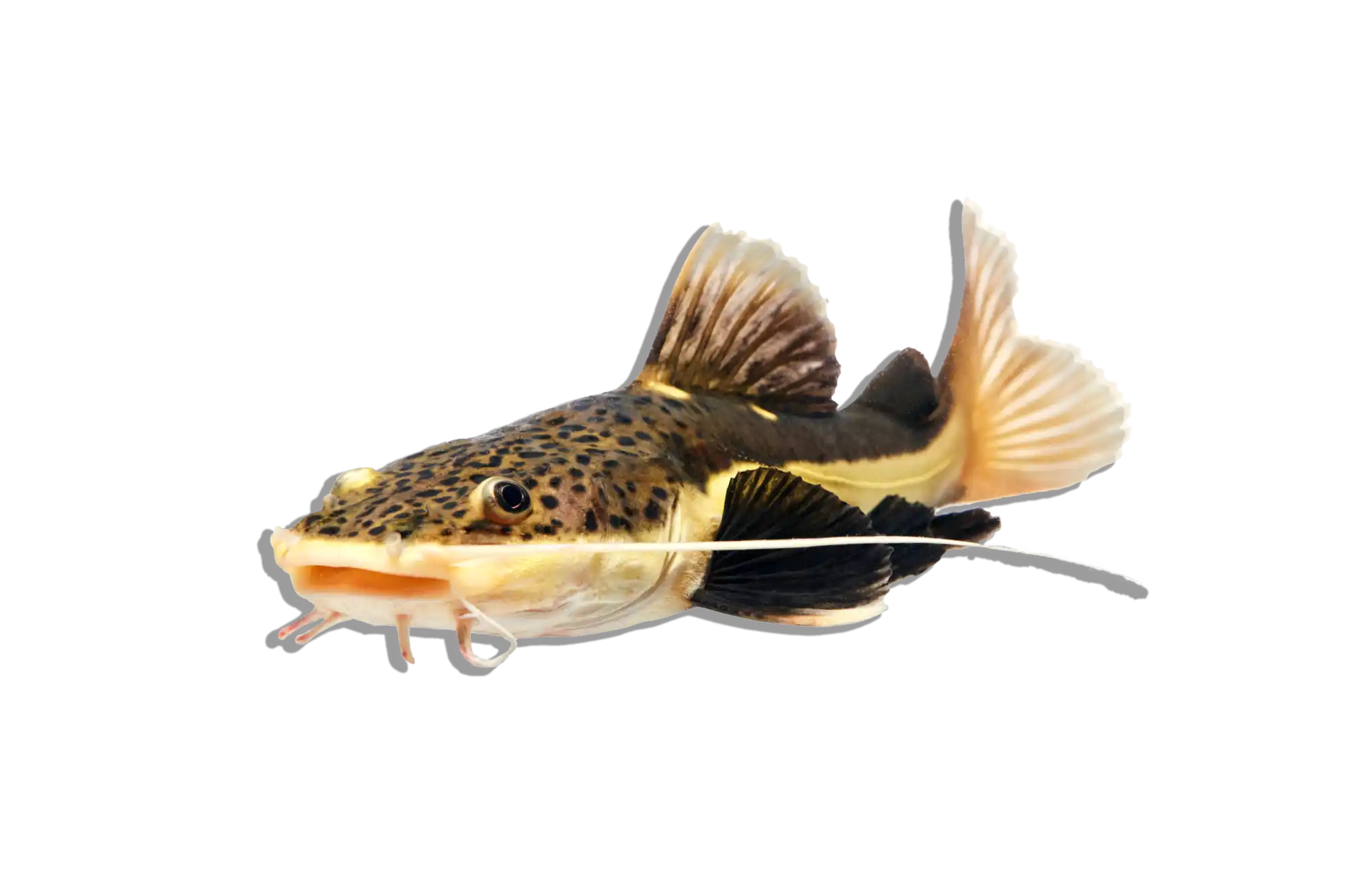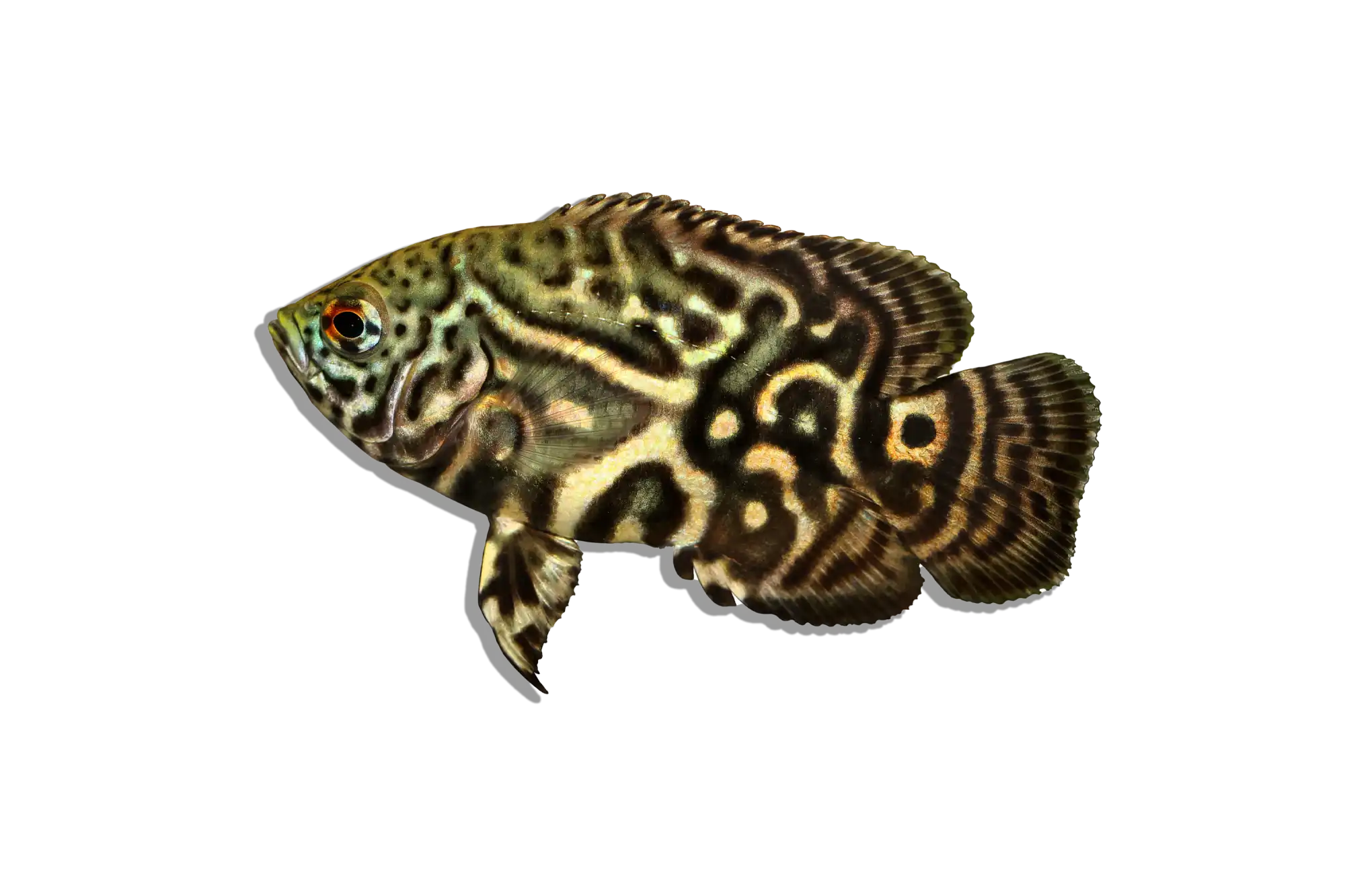Description
Common Name: Albino African Lungfish
Scientific Name: Protopterus dolloi sp.
Other Names: Albino Marbled Lungfish
The Albino African Lungfish is a unique and fascinating freshwater fish known for its elongated, eel-like body and distinctive albino coloration. Unlike the typical dark marbling seen in its non-albino relatives, this variety has a pale, almost translucent appearance with pinkish hues due to the lack of pigmentation. The Albino African Lungfish is known for its ability to breathe atmospheric air using a specialized lung-like structure, making it an extraordinary addition to any aquarium.
Habitat and Distribution: The natural variety of Protopterus dolloi is native to the slow-moving rivers, floodplains, and swamps of Central and West Africa, particularly found in countries like the Democratic Republic of Congo and Angola. These fish inhabit areas with dense vegetation, soft, muddy substrates, and seasonal flooding. The water in their natural habitat is typically warm, soft to moderately hard, and slightly acidic to neutral.
Size and Lifespan: In both the wild and captivity, Albino African Lungfish can grow up to 3-4 feet (90-120 cm) in length. Their lifespan can range from 15 to 25 years, depending on the care and conditions provided in the aquarium. Ensuring a proper diet, clean water, and adequate space are crucial for their longevity and well-being.
Diet and Behavior: Albino African Lungfish are omnivorous and have a varied diet that includes small fish, crustaceans, insects, and plant matter in the wild. In an aquarium, they should be fed a varied diet of live or frozen foods such as fish, shrimp, earthworms, and high-quality carnivorous pellets. They can also consume vegetable matter like spinach or peas. These fish are generally solitary and can be territorial, especially towards other lungfish or similar species. They are known for their ability to survive in low-oxygen environments by breathing atmospheric air, a behavior facilitated by their lung-like adaptation.
Breeding and Reproduction: Breeding Albino African Lungfish in captivity is rare and challenging due to their specific environmental needs and behaviors. Little is documented about their breeding habits in captivity, but in the wild, they create burrows in the mud for spawning. The male guards the nest and the eggs. Replicating these conditions in an aquarium setup is difficult, and successful reproduction typically involves creating conditions that closely mimic their natural habitat.
Aquarium Care and Tank Requirements: To keep Albino African Lungfish, a large aquarium of at least 200 gallons is recommended to provide ample swimming space and accommodate their size. The tank should include a soft, sandy substrate and plenty of hiding spots created with rocks and driftwood to mimic their natural habitat and reduce stress. Gentle water flow and efficient filtration are essential to maintain water quality. Regular water changes are crucial to keep the environment clean and stable. A tightly fitting lid is necessary to prevent escapes, as lungfish are known to be excellent escape artists.
Ideal Tank Mates: Albino African Lungfish are best kept alone due to their territorial nature and potential for aggression towards other fish. If housed with other fish, ensure that tank mates are large, robust, and not easily intimidated. Suitable tank mates might include other large, non-aggressive fish that can tolerate similar water conditions, but careful monitoring is essential.
Difficulty Level: Advanced. While they are hardy and adaptable, their large size, specific dietary needs, and territorial behavior require extensive care and a well-maintained, large aquarium. They are best suited for experienced aquarists.
Water Parameters:
- Temperature: 75-82°F (24-28°C)
- pH: 6.0-7.5
- General Hardness (GH): 4-12 dGH
- Carbonate Hardness (KH): 2-8 dKH
- Ammonia: 0 ppm (ideal), up to 0.25 ppm (max)
- Nitrite: 0 ppm (ideal), up to 0.25 ppm (max)
- Nitrate: <20 ppm (ideal), up to 40 ppm (max)
Additional Information:
- The Albino African Lungfish's unique appearance and ability to breathe atmospheric air make it a fascinating addition to any aquarium, providing both visual interest and a touch of prehistoric charm.
- These fish can survive in low-oxygen environments and even aestivate (a form of dormancy) during dry seasons by burrowing into the mud and forming a mucus cocoon.
- Fun fact: The African Lungfish is one of the few fish species that can survive out of water for extended periods, relying on its lung-like adaptation to breathe air.
- In their natural habitats, African Lungfish play a role in controlling populations of small invertebrates and fish, contributing to the ecological balance of their environments.






















